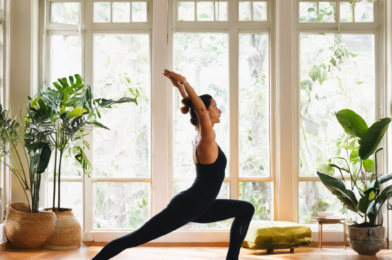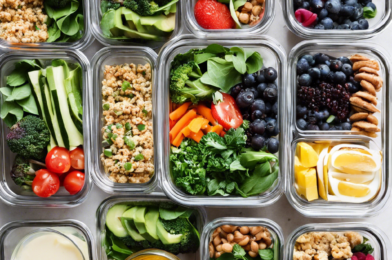Starting your day with a quick yoga routine is an excellent way to energize your body and calm your mind. This 10-minute morning yoga sequence will help you wake up your entire body, improve your flexibility, and leave you feeling refreshed and ready to take on the day.
Begin your practice by sitting on your mat with your eyes closed and taking a few deep breaths. Focus on your breath and set an intention for your practice. Maybe you want to dedicate your practice to cultivating energy and flexibility or setting a positive tone for the day. When you’re ready, gently open your eyes and start with a simple seated twist. Place your hands on your knees and twist your torso to one side, keeping your spine long and your shoulders relaxed. Hold for a few breaths, then repeat on the other side.
Next, come onto all fours for a cat-cow stretch. Align your wrists under your shoulders and your knees under your hips. Inhale as you arch your back gently, lifting your seat bones and tailbone toward the ceiling. Exhale as you round your spine, drawing your navel toward your spine and tucking your chin into your chest. Continue this fluid movement, synchronizing your breath with your motion.
Follow this with a downward-facing dog. Spread your fingers wide, press into your hands, and lift your hips toward the ceiling, forming an inverted V-shape with your body. Keep a slight bend in your knees and focus on lengthening your spine and the backs of your legs. You can gently pedal out your legs to warm up your hamstrings and calf muscles.
Now you’ll come forward into a forward fold, either with bent or straight knees depending on your flexibility. Lengthen your torso forward, reaching toward your ankles or shins. Let your head be heavy and relax your neck. You can gently sway from side to side or gently nod your head yes and no to release any tension in your spine and neck.
Then, step your right foot back into a low lunge, keeping your hands on your mat or on your front thigh. Make sure your front knee is stacked over your ankle, and press your back heel toward the floor, feeling a stretch through the front of your back leg. Hold for a few breaths, then step forward and repeat on the other side.
From here, rise up into a high lunge, bringing your torso upright and keeping your hands on your front thigh or hips. Press your back heel down and engage your front leg muscles, feeling a stretch in your hip flexor. You can also raise your arms overhead, pressing your palms together, for a deeper stretch.
Come back to standing at the top of your mat and transition into a gentle side bend, reaching your arms overhead and leaning to one side, then the other. Finish your practice with a standing forward fold, bending your knees as much as you need to in order to rest your belly on your thighs. Hold for a few breaths, then gently roll up through your spine to stand, sweeping your arms overhead and reaching toward the sky.
Conclude your practice with a brief moment of stillness. Bring your hands together at your heart and bow your head, acknowledging the time you dedicated to your practice and carrying that sense of intention into your day.
Whether you’re a beginner or an experienced yogi, this energizing morning routine is a wonderful way to connect with your body and set a positive tone for the hours ahead. By taking just 10 minutes each morning to move through these poses, you can cultivate flexibility, energize your body, and calm your mind, ensuring you’re ready for whatever the day may bring. Namaste!






